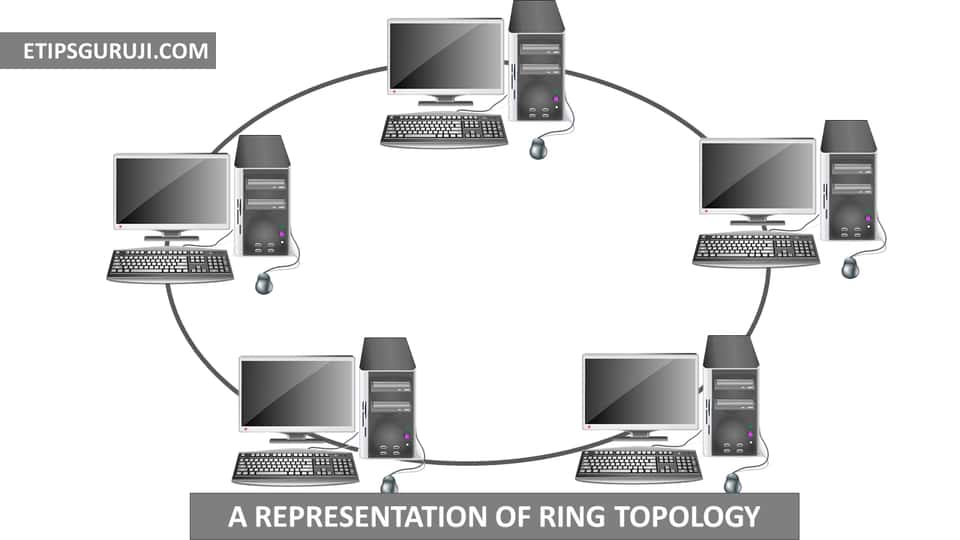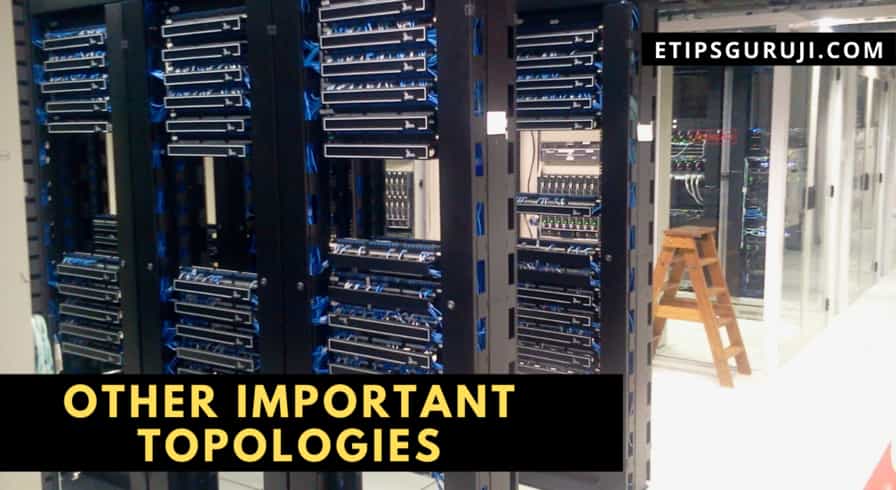Ring Topology: How it Work, Advantages & Disadvantages

Searching for making an interconnected network at home space and confused whether or not ring topology works fine for you? In that case, we had listed all the information that you are needed to know about ring topology.
In short, Ring topology is a pattern of interconnecting nodes in a closed curricular loop where one node is connected to two nearby nodes as an intermediate.
That’s the definition of the ring topology, but with this article, you will get all the details related to ring topology along with its advantages and disadvantages. We also try to cover the other related topologies including token ring topology and logical ring topology.
What is a Ring Topology?

In general, the term “Topology” is simply a pattern of the interconnecting nodes (system) in a network, and ring topology is just a sub-category of broad term topology.
Briefly, Ring topology is also known as circular topology which is a closed-loop connection using a local area network where the data packets are transmitted or circulated within the ring network frame.
How does a Ring Topology Work?
Now, let’s talk about how ring topology works.
When the data is needed to reach at a specific node, then the data packet goes through each of the intermediate nodes in the ring topology network and when it reaches the destination node, it gets copied at that system.
And when the data packet (after the packet passes through each node or in a full circle) it gets returned to the sender’s node, and ultimately gets removed from the transmission source station.
Moreover, the nodes of ring topology have equal access to network media. But, this builds a conflict situation i.e. if one of the nodes (or system) fails to transmit the data through itself, the entire network gets failed.
People Also Read:
- What is a Forward Slash? – Its Location and Best Uses
- CMOS Battery- Full Form, Functions, and Replacement
Advantages of Ring Topology

These are the following advantages of ring topologies:
- It is easy to install ring topology because it needs fewer connections. That means the cost of installation is also less because of its short cable length requirement.
- It is easy to manage, whenever you add or remove the device from the ring topology. Because in this only two neighboring nodes are required to change.
- Ring topology does not require any kind of central device or a centralized control system.
- In the ring topology, only one cable connects each node to its neighboring nodes, so no wiring closest space required.
- As data travels in one direction only around the ring, it is suitable for using optical fibers, so network speed is quite good or there is a possibility of having a high-speed transmission.
Disadvantages of Ring Topology
These are the following disadvantages of ring topologies:
- If one of the nodes gets fails to transmit the data through itself, the entire network gets failed. In short, node failure causes network failure, and the network can’t be useful until the defective node has been removed/replaced from the ring.
- The addition of a new node or removing an old device to a ring network then there is a possibility that you need to reconfigure the whole system.
- If you have a large network then the diagnosis of a faulty node is difficult and you may require to check many points in the network to find the faulty node.
These are the Ring Topology Advantages and Disadvantages.
Token Ring Topology
Token ring is a network based on ring technology. It is a data link technology for LANs (local area networks) in which devices are connected in a ring topology. However, it was developed by IBM in 1980 as an alternative to Ethernet. It works in the network layer of OSI.
In a token ring network, a single special packet called a token is passed around the token network, and it waits until the token is available to transmit data to a computer.
In short, the token is passed across the ring, the computer modifies the token, adds the electronic address and data, and sends it around the ring, each computer in the order receives the token and passes the information to the next computer.
The process goes on, until when the token does not return to its originator and the computer receives a return message as a confirmation that indicates it was sent.
Logical Ring Topology
By defining the term “logical topology”, it indicates how the data is transmitted between network nodes rather than the physical layout of the route of data.
So, all ring topologies can be called to be the logical ring topologies. In a logical topology, the data transmitted from one device to another in a closed circular path, and lastly get received back to the sender.
Therefore, how the data travels in the logical ring topology can be governed by the form of packets or in the form of token.
Other Important Topology

These are the following types of topology in a computer network:
Point-to-point link
It is a communications protocol used to connect computers to remote networking services including Internet service providers.
Star Topology
In this, all other nodes (computers) are connected with a server (central hub).
Bus Topology or Linear Topology
In this, each computer is directly connected to primary network cable in a single line. It can be used for smaller networks.
Tree Topology
It is a network with the shape of an inverted tree with the central root and sub branching to the network’s extremities. Within this topology, there’s a single connection between two nodes.
Mesh Topology
A network in which there are multiple network links between computers to provide multiple paths for data to travel.
Hybrid Topology
Two or more topologies combined is known as hybrid topology.
People Also Read:
- What Motherboard do I have? – Step by Step Guide
- Full Form of Computer- Its Generations, Parts and Types
General FAQs
Which Network Topology is fastest?
Star topology is the fasted topology that consists of a central node connected by a single path to all other nodes. This makes it easy to use with centralized control and simple access protocols.
How do you set up a ring topology?
To set up a topology you need the following devices such as Desktop or Laptops or Tab, Switches, Connecting Wires. Now connect each of the switches in a closed path format. Next, connect a single computer to a switch and assign IP addresses.
Why do you think, ring topology is the best choice for a network?
Ring topology is the best choice for a network where smaller nodes are connected because it required short cable length, which is easy to install and manage, and thus decreases the installation cost.
What are the factors that must be considered before making a choice for the topology?
There are numerous factors to consider in choosing the topology, but the most important factors that must be considered is cost, flexibility, and reliability.
